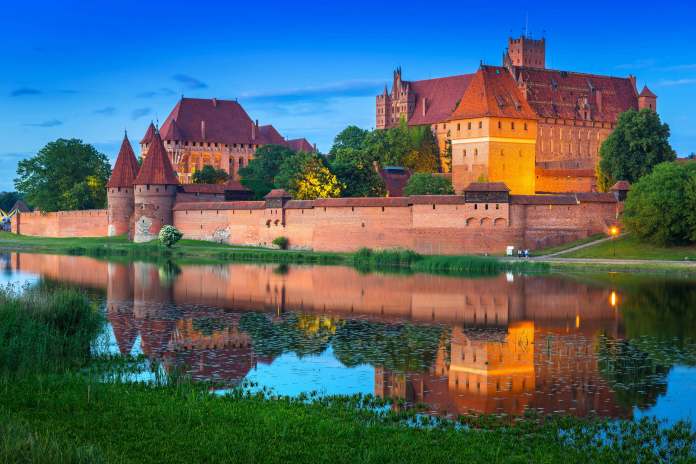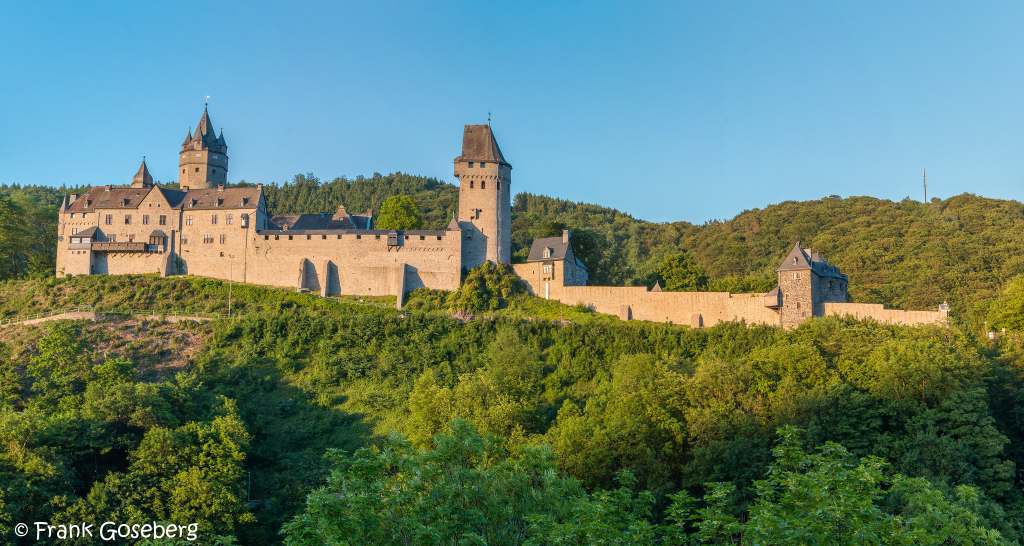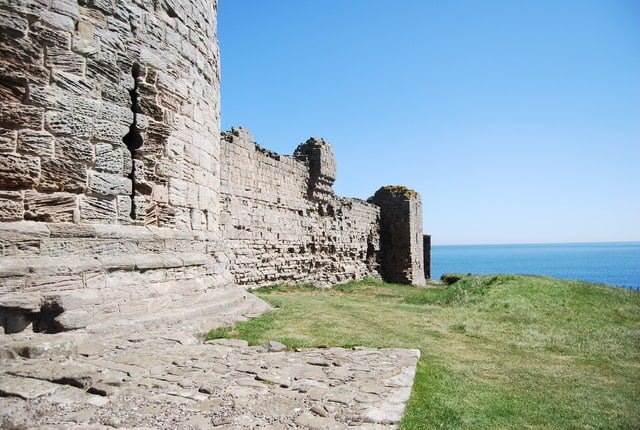The stunning Malbork Castle dates back to Poland’s medieval history, and hearkens back to the time when it served as the fortress for one of Poland’s largest armies and magasties. With absolutely stunning and breathtaking architecture, the castle amazes visitors and historians with its spectacular medieval features and structure.
Its long and storied history includes sheltering Christian pilgrimages, serving as the residence of the Grand Masters of the Teutonic Order and the Polish subprefecture, and as one of the many royalty places of Polish kings. Its legacy continued as a protectorate barracks, becoming the birthplace of conservation in Prussia. Today, it is one of the most exciting tourist attractions in Poland.
Table of Contents
Malbork is the largest castle in the world, almost double the size of the second largest fortification called Mehrangarh Fort.
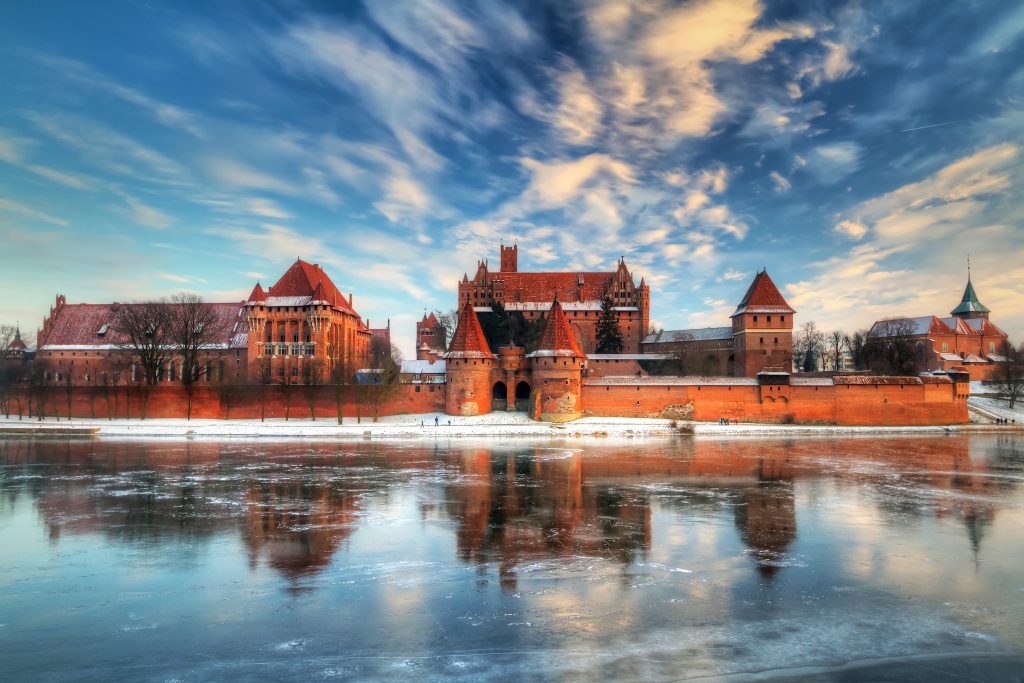
Frequently Asked Questions
Where is Malbork Castle Located?
Malbork Castle is situated in the town of Malbork in northern Poland, about an hour’s drive from Gdansk and the Baltic Sea.
When was Malbork Castle Built? Who Build It?
It was constructed In the 13th century by the Knights of the Teutonic Order.
When is The Best Time to Visit the Castle?
The most visitors are seen in spring to early autumn as the weather is generally quite pleasing with a colourful background of foliage.
What Other Monuments are Located Nearby?
Lidzbark Bishops’ Castle, also spectacular, is located a little farther east of Malbork towards Ukraine.
FOR HISTORY | BEAUTIFUL IMAGES | INTERESTING FACTS | TRAVEL TIPS
Early History
The Teutonic Order in Prussia
The construction of the castle’s massive size (at about 600 m long) dates from between 1280 and the second half of the 15th century. Some sources say that discussions actually took place for the Malbork castle to be demolished at the end of the 18th century, and its building materials were intended to be used to construct new army barracks.
The castle is perched on the east bank of the Nogat River (the right-hand part of the Vistula estuary) and consists of three parts: the Upper Castle, the Middle Castle and the Lower Castle.
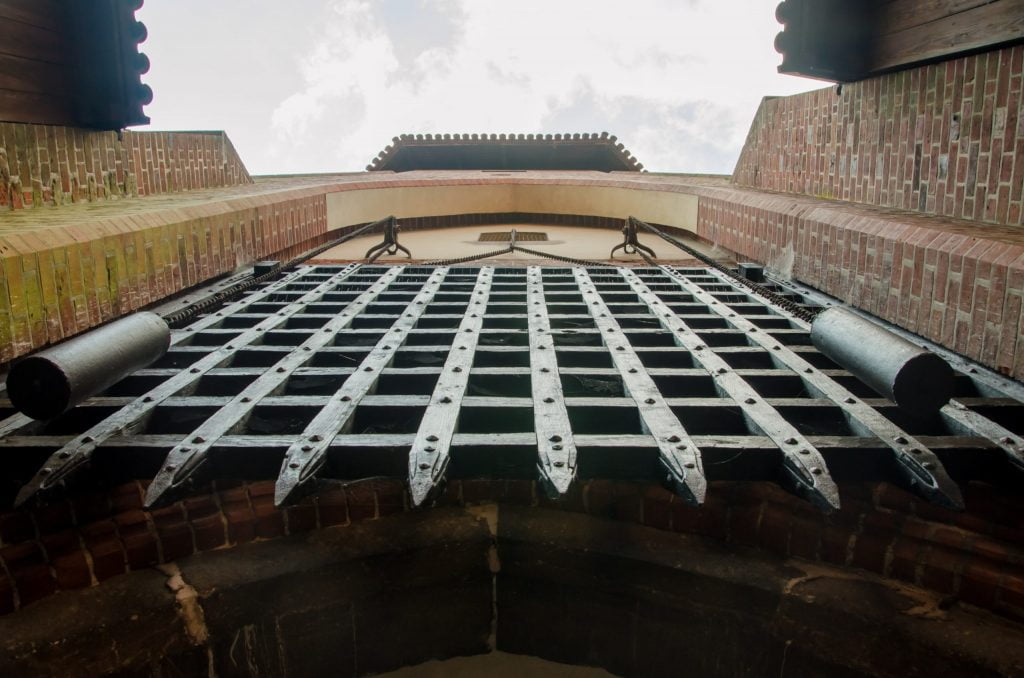
In 1190, the German merchants established the Teutonic Order in Palestine during the Third Crusade as a hospital order. In 1198, its knights protected Christian pilgrims in the Holy Land and in the fight against pagan nations. The seat of the Grand Master was placed there as long as the Teutonic Order possessed territories in the Holy Land. . However, when the Christians finally lost Palestine, the order moved the seat to Venice initially, and then to Malbork in 1309 (in what was then Prussia). The knights, recruited from the Order’s German properties, took part in many battles and led the Teutonic army. Also, they managed administrative functions in commandery while brother priests served God and ran the chancellery.
Malbork serving as the residence of the Grand Master (1309-1457)
By 1309, Malbork was one of the monastery castles in the Teutonic state. The number of brother knights and brother priests suddenly increased, resulting in new and more prominent buildings for the convent in the Upper Castle. However, there was no room for the Grand Master and his court. North of Upper Castle was chosen as the new place of residence for the head of the Teutonic Order and its state. The Upper Castle’s large-scale reconstruction work began during the era of the Grand Master Luther of Braunschweig (1331-1335). In 1341, Dietrich von Altenburg, the first Grand Master, was buried underneath the church in St Anne’s Chapel, and was completed in 1344.
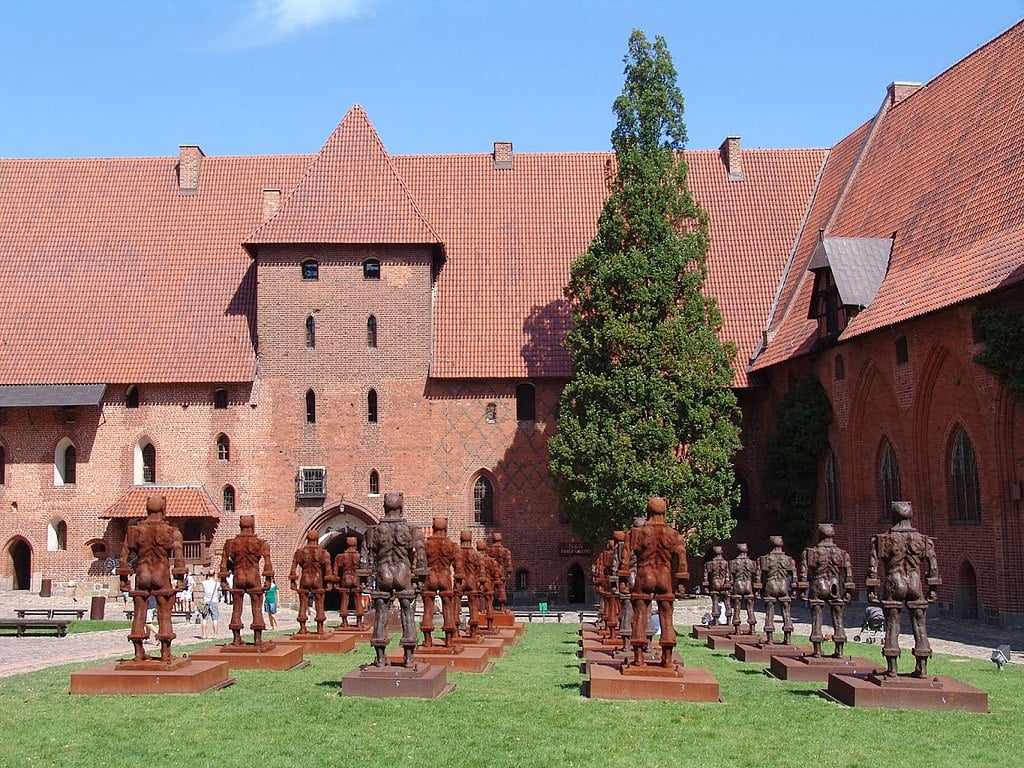
After the Thirteen Years’ War began in 1454, Malbork was seized by the Polish army and the troops of Gdansk. Unfortunately, the Grand Masters were not able to pay the ransom, and therefore the Grand Master had to leave Malbork and move his seat to Königsberg. On June 8th 1457, Polish king Kazimierz the Jagiellonian entered Malbork and seized power of the castle. Two days later, he earned homage in the Great Refectory. All later struggles of the Teutonic Knights to reconquer Malbork failed.
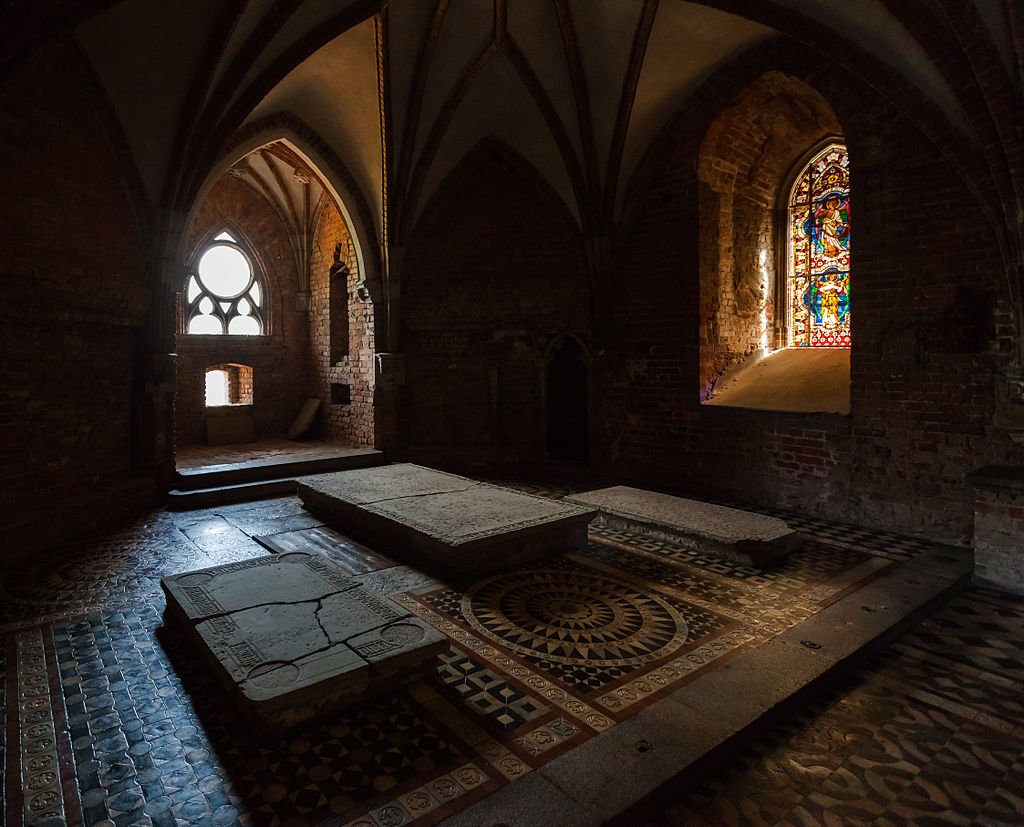
Malbork Under the Rule of Poland (1457-1772)
In 1466, according to the Second Treaty of Torun, Malbork was irrevocably incorporated into Poland and hence became a subprefecture. By 1772, Malbork was a temporary royal residence, and the king occupied the chambers in the Palace of the Grand Master during his visits.

The inhabitants of the Lower Castle began to grapple with the guilds from the town on the economic market. A romantic image of the castle was created by the contrast of the massive Gothic brick walls and the small craftsmen’s houses that abutted them, which permeated in people’s minds at this time. In the aftermath of conservation, works that were carried out in the 19th century, as well as small buildings surrounding the castle, were demolished.
Revisit More Historic Places Below or Read Further
Current Times
Ferdinand von Quast, the first Prussian conservator, governed the restoration works from 1851 to 1874. The second significant stage of the restoration occurred between 1882 and 1922, and consisted of a heavy reconstruction of the main castle’s medieval style. Conrad Steinbrecht supervised these restorations, and his successor Bernard Schmidt completed the task in 1945.
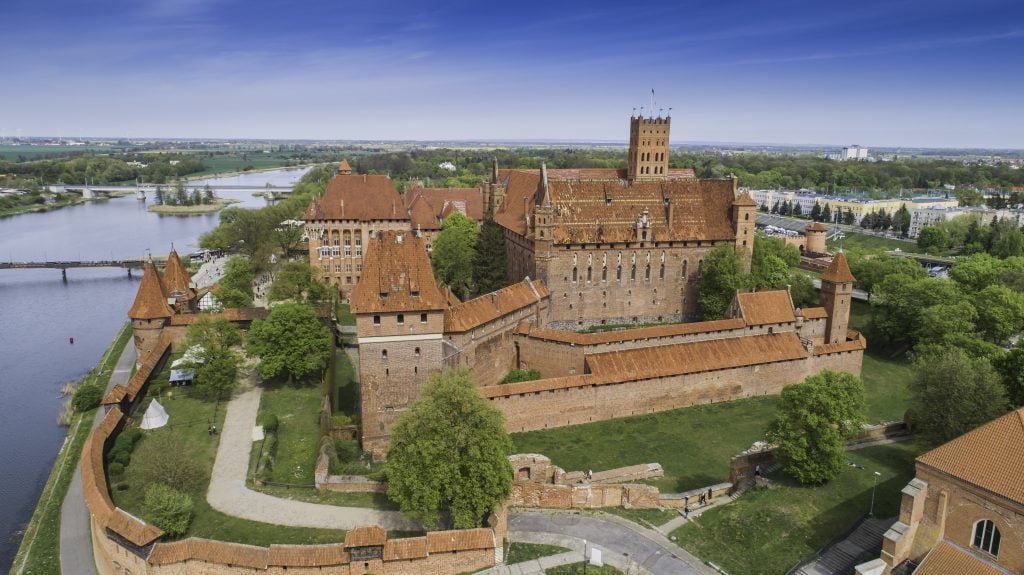
Destruction in 1945 and Rebuilding
National socialists viewed Malbork and the Teutonic Order Knights as the pioneers of Germans in the East, overturning the idea as a tool of propaganda. The castle was declared a fortress when the Red Army was approaching in 1945. The German soldiers defeated it over the course of three months. The eastern parts of the court suffered the most damage during the attacks. Poland then took over Malbork Castle, which by 1945 was in almost complete ruin. Only the western part of the Upper and Middle Castles survived the attacks without significant damage. Temporary repairs were done immediately after the war, but proper reconstruction hadn’t yet begun.
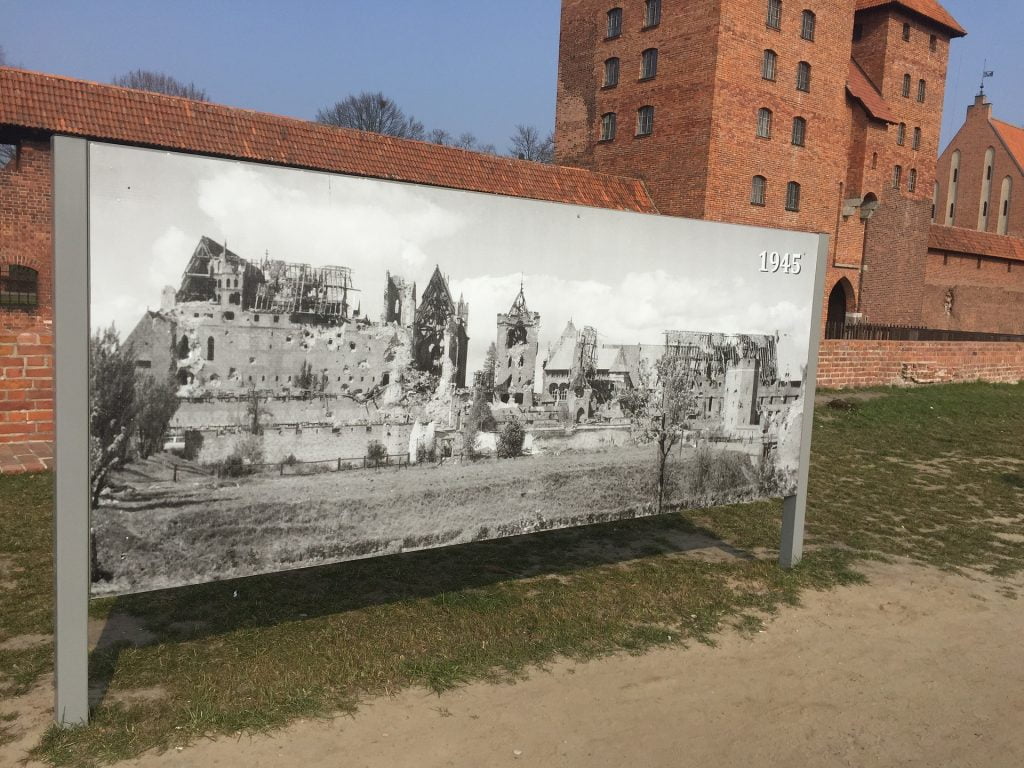
Unfortunately, a tragic event would soon interfere. In 1959, the roof over the Middle Castle’s western wing caught fire and burned down irreparably. However, this incident ignited the idea to begin the reconstruction of the entire building. The Castle Museum opened in 1961 and the general restoration of the castle began.
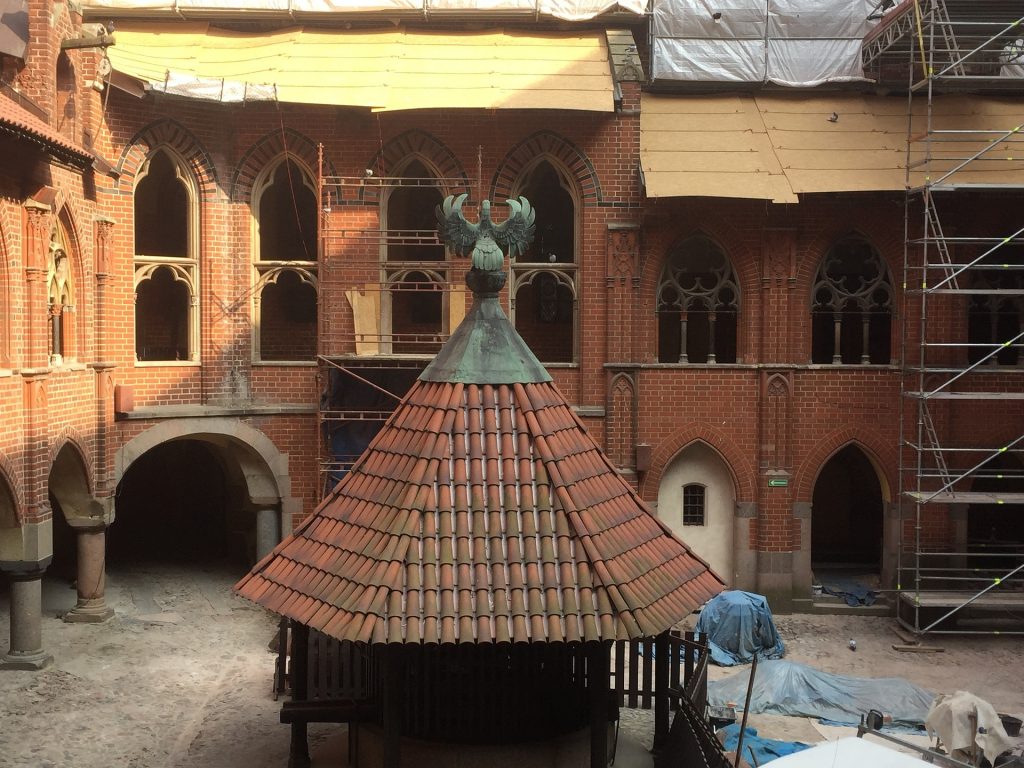
In the present day, only the castle church and the Lower Castle’s western wing show evidence of brutal damage caused by the war. The costly rebuilding of Malbork Castle would ultimately end up being advantageous from an economic standpoint, as today it is one of Poland’s most frequently visited sights.
Interesting Malbork Castle Facts
- The earliest documented mentions of the castle refer to it as a chateau, and list it as being founded in the year 1278.
- Malbork is the largest castle in the world, almost double the size of the second largest castle called Mehrangarh Fort.
- The Middle Castle consists of The Grand Master’s Palace, known as his living quarters. Also featured there are The Great Refectory, where large events occurred, as well as The Hospital and The Grand Commandery. It also, hospitably, provided a Guest Wing.
- The Lower Castle had what were known as External Defence Walls.
- Very close to where a railway stands today, there remains the nearly 30-meter and very well-preserved Buttermilk Keep, built between 1335 and 1340, that used to be the north-eastern corner of the Lower Castle.
- Have you heard of the Game of Thrones TV show? Well, the settings you see in there were part-inspired by the Malbork castle!
Visiting Malbork Castle – Tips and Tricks
Planning to visit the castle? We have you covered! Read the information below to ensure you are ready for the trip without unnecessary surprises that might worsen your experience.
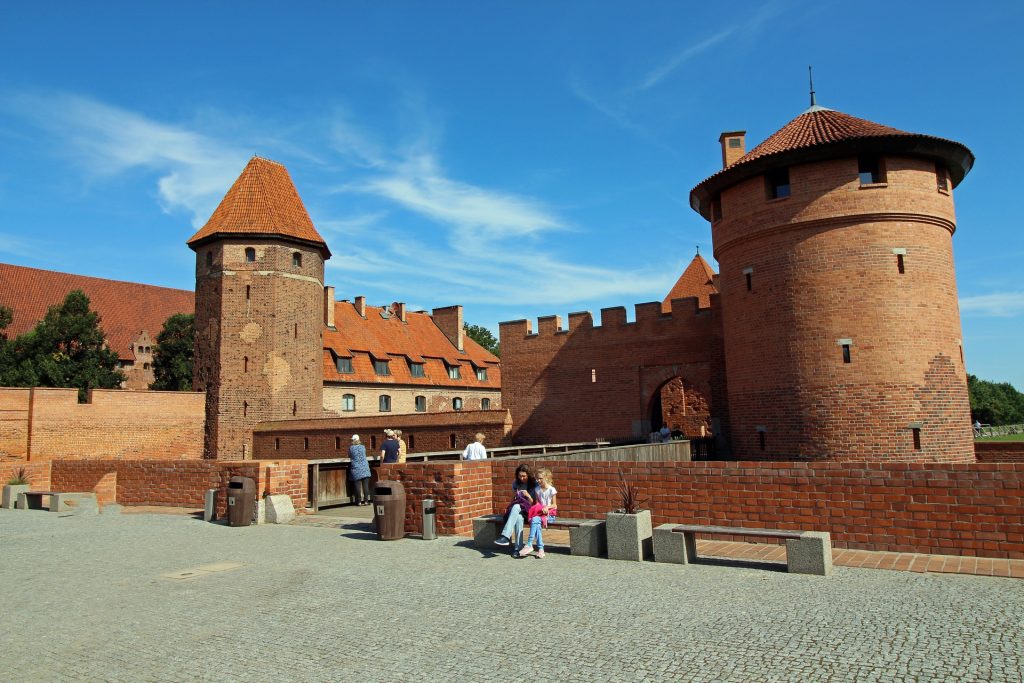
How to get to Malbork Castle?
The easiest way to visit Malbork Castle via Gdansk is by train. The main station is called Gdańsk Główny, and from there it takes approximately 30 minutes to an hour to reach the castle, depending on which of three trains you choose. Regio trains are typically the slowest but also the cheapest; they can take up to an hour to reach the castle, and the cost is 13.50 PLN ($3 USD). TLK trains are slightly faster, taking about 35 minutes, and a ticket is 17 PLN ($4 USD). EIC trains are the best option — they offer a direct route and take just under a half hour for 55 PLN ($13 USD). All of these prices are quoted for a one-way ticket.
When you reach the Malbork train station, you can hire a taxi for the short trip to the castle, which will cost around 15 PLN ($5 USD). A pleasant walk to the castle from the station is also a great possibility, which takes about 20 minutes.
Ticket Prices, Visiting Hours & Travel Tips
Information was checked & updated on November 14, 2023.
Tickets are priced according to season and they include an audio guide. During the Spring-summer season 2023, the normal ticket cost is 70 PLN ($17 USD). Family ticket (2 adults and 2 children) costs PLN 220.00 ($53 USD) Children up to 7 years old is free but you need to collect a “0” ticket at the museum’s box office.
The castle is open from Tuesday – Sunday, 9.00am-7.00pm (last entrance at 5.00pm) The entry limit of the tour is 700 people / hour, it would be best to purchase tickets in advance!
Typically, you should allow at least 3.5 hours to roam around the castle to get the full, beautiful, and immersive experience. The audio guide is a key feature of the tour, as it gives you important information not to be missed, and also acts as your GPS throughout the tour.
Up to Date Information
For up to date ticket prices and visiting hours visit the official website: https://zamek.malbork.pl/en
Some words of advice and tips:
- Wear appropriate shoes, as there is a lot of walking to do and many steep staircases to climb and descend.
- Don’t forget to visit the Grand Masters’ Palace. As the name suggests, it is one of the grandest and special sections of the castle.
- When you leave the castle itself, stroll over the pedestrian bridge to the other side of the Nogat River for an awe inspiring view of the entire fortress.
Virtual Tour of The Main Malbork Castle Areas
Malbork castle made it to our list of the best virtual castle tours. Tour around from the comfort of your own home and don’t forget to explore other castles on this list!

